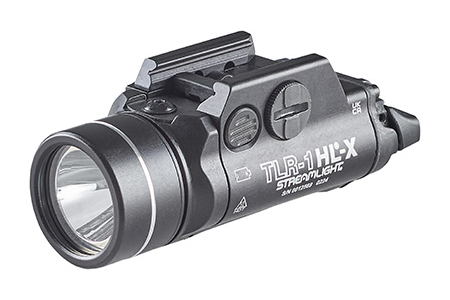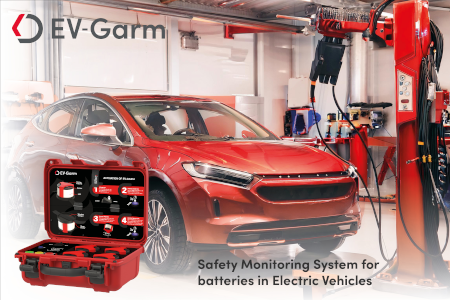 Compressed Air Foam Systems Worldwide Compressed air foam systems are consistently gaining momentum and acceptance throughout the fire service industry. As more and more departments across the country – and brigades from around the world turn to CAFS, it has changed the way fires are attacked, how quickly fires can be extinguished and vastly limits the damage that fires can inflict. The two articles below illustrate worldwide acceptance of compressed air foam.
Compressed Air Foam Systems Worldwide Compressed air foam systems are consistently gaining momentum and acceptance throughout the fire service industry. As more and more departments across the country – and brigades from around the world turn to CAFS, it has changed the way fires are attacked, how quickly fires can be extinguished and vastly limits the damage that fires can inflict. The two articles below illustrate worldwide acceptance of compressed air foam.
Faced with rainfall shortages and increasingly scarce water supply prompted the Queensland Fire and Rescue Services (QFRS) in Australia to consider implementing Waterous CAFSystems into their regular operations. When the time came to purchase two new pumper tankers, the impressive knockdown capabilities and resourceful water use of CAFS sold the QFRS on the revolutionary technology of compressed air foam systems.
The QFRS recently purchased two new Type 4 pumper tankers, which are equipped with Waterous CAFSystems. Manufactured by U.K. OEM Scania, one of the two trucks will provide service in the urban/rural interface region of Brisbane City at Capalaba, while the other will service Windsor, a suburban area located west of Brisbane City.
The use of Class A foam additives has complimented the overall reduction in water usage in a wide range of situations including firefighting operations in urban interface, structural and rural environments, said Shan Raffel, EngTech MIFireE and project manager for the new QFRS vehicles. CAFS is another technology that has shown to further increase the efficiency of water as an effective extinguishing agent.
Over the last decade, water resources have been, and are at critical levels in South East Queensland, which is one of the impelling reasons the QFRS implemented the Waterous 140-P CAFSystem units. The consequences of climate change to the area in relation to rainfall patterns has caused a focus on sustainable solutions for the management of scarce water resources at a time when Queensland’s economy and population are expanding.
In past years, the Queensland government has invested large sums of money to ensure the area’s water resources are sustainable and able to meet the current and future needs of the rapidly growing population. By dedicating funds and legislation toward water conservation, the government believes they are in no way exempt from the responsibility of providing sustainable water and have been called upon to lead by example.
The governments increased responsibility and dedication has in turn led the QFRS to augment water consciousness and provide improved firefighting capabilities with more efficient knockdown by the implementation of CAFS.
After implementing the new pumper tankers equipped with Waterous CAFSystem units, the QFRS received their first extensive CAFS product orientation and education courses facilitated by Keith Klassen, instruction program manager with Waterous.
 Based at the QFRS fire training grounds at Whyte Island and delivered over a period of two days, the courses encompassed live firefighting situations and CAFS demonstrations in structural and vehicle fires, reinforced by quality classroom time covering theory and supplemental educational materials. The education courses proved highly beneficial for the QFRS as the brigade gained an intimate understanding of CAFS and the capabilities of compressed air foam.
Based at the QFRS fire training grounds at Whyte Island and delivered over a period of two days, the courses encompassed live firefighting situations and CAFS demonstrations in structural and vehicle fires, reinforced by quality classroom time covering theory and supplemental educational materials. The education courses proved highly beneficial for the QFRS as the brigade gained an intimate understanding of CAFS and the capabilities of compressed air foam.
Since the initial training from Waterous, the QFRS team has propelled their in-house training to include work with a number of firefighting organisations throughout Australia. The QFRS invited and hosted three of the most experienced educators from the Australian Capital Territory Fire Brigade (ACTFB) based in the city of Canberra to participate in education courses so as to enhance their standard operating procedures and best practices with CAFS operations.
The ACTFB has four CAFS vehicles, two of which are equipped with the Waterous 500- 150-P, while the remaining two are equipped with the Waterous 100-50-DS CAFSystemsAlso providing CAFS educational situations for Air Services Australia (ASA), the QRFS conducted live burns on aircrafts and vehicles at the ASA training grounds, both of which provided successful opportunities for CAFS utilisation and observation. The QFRS additionally worked with the Redland Shire Council for urban interface fire suppression, staging controlled burns to demonstrate proper CAFS technology.
Overall, the QFRS continues to drive their CAFS educational experience forward within their own brigade while extending beyond to provide educational opportunities for related organisations throughout the area. Water conservation and effective knockdown capabilities remain the powerful characteristics behind the use of Waterous CAFSystems for the QFRS.
Waterous’ CAF Units Strengthen Vietnams Fire Service By Tim Schanno, Sale Manager, Asia
Vietnam is one more global location where Waterous CAFS units are providing valuable fire suppression capabilities.
The fire service industry in Vietnam is growing, but still in its infancy when contrasted with other parts of the globe. Truck production is far lower as compared to the USA simply because the smaller population doesn’t necessitate the volume of trucks required on the other side of the Pacific.
Additional factors contributing to the level of growth within the Vietnam firefighting industry include its relatively new beginnings; as an organised service, firefighting in Vietnam began only recently around 1976. At that time, those interested in fighting fires had few pieces of equipment with which to start a department besides military vehicles that remained after the war.
These factors, and other growing pains, caused the country to suffer horrible losses by fire in the early years of firefighting development. Since the 1970s, however, Vietnam has become a major player in the global marketplace. With an interest in doing business with the U.S., Vietnam’s firefighting industry provided an opportunity for Waterous to help provide an understanding of what compressed air foam can do.
Last year, Waterous began working with a fire truck manufacturer and distributor in the country’s capital of Ho Chi Minh City, to promote CAFS products throughout Vietnam, Laos and Cambodia. After several trips to Vietnam, representatives from the truck manufacturer visited Waterous facilities in South St. Paul, Minnesota and Peoria, Arizona.
 Following the initial visits to the Waterous locations, the truck manufacturer provided for firefighters from various fire services throughout Vietnam to visit the Waterous Arizona facility and participate in CAFSystems education and product orientation courses.
Following the initial visits to the Waterous locations, the truck manufacturer provided for firefighters from various fire services throughout Vietnam to visit the Waterous Arizona facility and participate in CAFSystems education and product orientation courses.
As the country’s governing bodies stipulate the fire service industry must exhibit expertise in cutting-edge firefighting technology, CAFSystems were a natural enhancement to Vietnams firefighting industry With three CAFSystems in Vietnam including a retro-fit 140-SP kit, 70-35-E and an 80-40-E, these CAFSystems are the first of their kind to be imported into Vietnam, and the reception of this new technology has been phenomenal.
Waterous strong relationship provides the Vietnamese firefighting industry tremendous benefits by reducing costs to the end user, and infusing the Vietnam fire service with invaluable firefighting technology for effective fire suppression.











